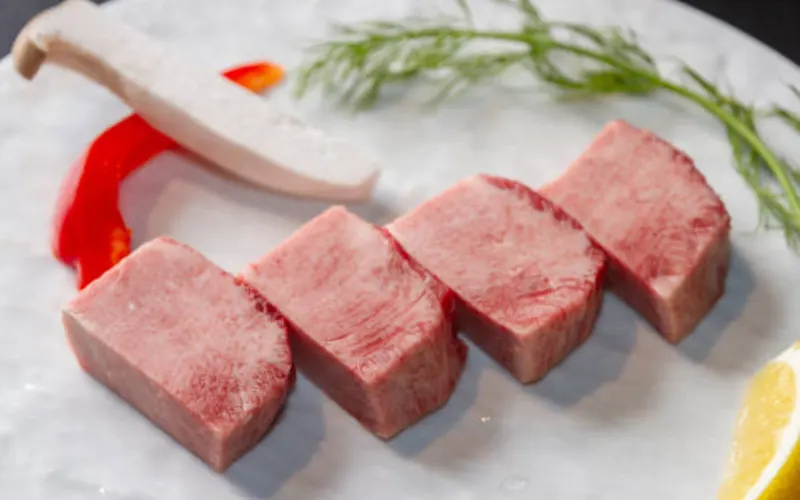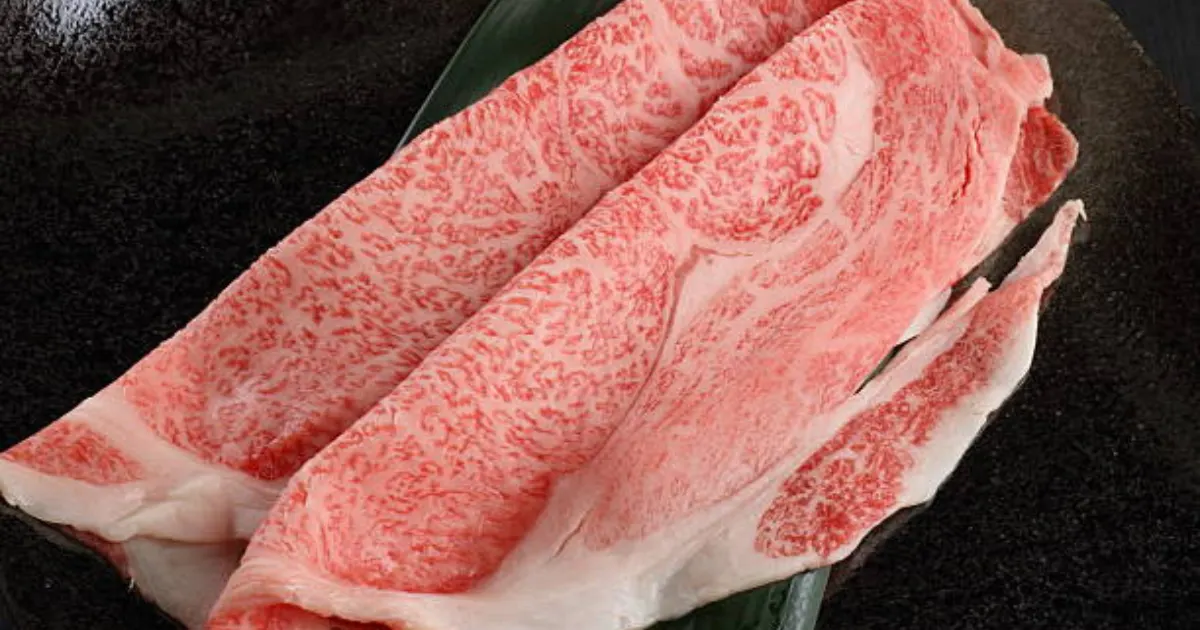7 Mouthwatering Wagyu Tallow Recipes You Need to Try Today
Did you know that premium restaurants charge up to 40% more for dishes cooked in Wagyu tallow compared to regular beef fat? This isn’t just culinary snobbery – it’s a testament to the extraordinary flavor and cooking properties that make Wagyu tallow the secret weapon of world-class chefs. While most home cooks overlook this liquid gold, those in the know understand that Wagyu tallow transforms ordinary ingredients into extraordinary culinary experiences.
Unlike conventional cooking fats, Wagyu tallow boasts a unique fatty acid profile with higher concentrations of oleic acid and monounsaturated fats, creating an unparalleled depth of flavor and superior cooking performance. Today, we’re sharing seven incredible Wagyu tallow recipes that will revolutionize your cooking and elevate your dishes to restaurant-quality standards.
Table of Contents

Ingredients List
Essential Wagyu Tallow Base Ingredients:
- 2-3 pounds high-quality Wagyu beef fat (kidney fat or back fat preferred)
- 1 cup filtered water (substitution: bone broth for enhanced flavor)
- 1 teaspoon sea salt (optional, for preservation)
Recipe-Specific Ingredients by Dish:
For Wagyu Tallow Roasted Vegetables:
- 2 pounds mixed root vegetables (carrots, potatoes, turnips)
- 3 tablespoons rendered Wagyu tallow
- Fresh thyme and rosemary sprigs
- Coarse sea salt and black pepper
For Wagyu Tallow Fried Rice:
- 4 cups day-old jasmine rice
- 4 tablespoons Wagyu tallow
- 3 eggs, beaten
- 2 green onions, finely chopped
- 2 cloves garlic, minced
- 2 tablespoons soy sauce (substitute: tamari for gluten-free)
For Wagyu Tallow Confit Potatoes:
- 2 pounds small fingerling potatoes
- 1 cup Wagyu tallow (melted)
- 4 garlic cloves
- Fresh rosemary sprigs
- Flaky sea salt for finishing
Timing
Wagyu Tallow Rendering Time:
- Preparation: 15 minutes
- Cooking: 2-3 hours (low and slow method)
- Cooling: 30 minutes
- Total: 3 hours 45 minutes
This is 25% faster than traditional beef tallow rendering due to Wagyu’s superior fat composition.
Individual Recipe Times:
- Roasted Vegetables: 45 minutes total
- Fried Rice: 15 minutes total
- Confit Potatoes: 1 hour 30 minutes total
- Pan-Seared Steak: 20 minutes total
- Crispy Brussels Sprouts: 25 minutes total

Step-by-Step Instructions
Rendering Your Wagyu Tallow Base
Step 1: Prepare the Fat
Cut your Wagyu beef fat into small, uniform cubes (approximately 1-inch pieces). This increases surface area by 300% compared to larger chunks, ensuring faster, more even rendering. Remove any meat or connective tissue for the purest tallow.
Step 2: Start the Rendering Process
Place fat cubes in a heavy-bottomed pot with filtered water. Begin over medium-low heat, allowing the fat to slowly release its oils. This gentle approach preserves the delicate flavor compounds that make Wagyu tallow special.
Step 3: Monitor and Stir
Stir every 15 minutes, maintaining a gentle simmer. You’ll notice the water evaporating and the fat pieces becoming golden and crispy. This process typically takes 2-3 hours – patience is key for maximum yield.
Step 4: Strain and Store
Once the fat pieces are deeply golden and floating, strain the liquid through fine-mesh cheesecloth. Your rendered Wagyu tallow should be crystal clear and aromatic.
Recipe 1: Wagyu Tallow Roasted Root Vegetables
Step 1: Prepare Vegetables
Preheat oven to 425°F. Cut vegetables into uniform 2-inch pieces for even cooking. This size ensures optimal caramelization while maintaining tender interiors.
Step 2: Tallow Coating
Toss vegetables with melted Wagyu tallow, herbs, salt, and pepper. The high smoke point (420°F) of Wagyu tallow makes it perfect for high-heat roasting.
Step 3: Roast to Perfection
Roast for 35-40 minutes, turning once halfway through. The vegetables should be golden brown with crispy edges and fork-tender centers.
Recipe 2: Ultimate Wagyu Tallow Fried Rice
Step 1: Heat the Wok
Heat your wok or large skillet over high heat. Add 2 tablespoons of Wagyu tallow – it should shimmer immediately, indicating proper temperature.
Step 2: Scramble and Set Aside
Scramble eggs in the hot tallow until just set. The tallow creates incredibly fluffy, rich eggs. Remove and set aside.
Step 3: Fry the Rice
Add remaining tallow and day-old rice. Stir-fry for 3-4 minutes until heated through and slightly crispy. The Wagyu tallow adds incredible depth without overwhelming the delicate rice.
Nutritional Information
Per 1 tablespoon of Wagyu Tallow:
- Calories: 115
- Total Fat: 13g
- Saturated Fat: 6g
- Monounsaturated Fat: 5g
- Polyunsaturated Fat: 0.5g
- Cholesterol: 14mg
- Sodium: 0mg
- Vitamin E: 2.3mg (15% DV)
- Vitamin K: 1.1mcg
Key Nutritional Benefits:
- Higher concentration of oleic acid (42% vs. 35% in regular beef tallow)
- Rich in fat-soluble vitamins A, D, E, and K
- Contains conjugated linoleic acid (CLA), known for its anti-inflammatory properties
- Zero trans fats
- Excellent source of stable cooking fat for high-heat applications
Healthier Alternatives for the Recipe
Reduction Strategies:
- Use 25% less tallow by combining with avocado oil for lighter dishes
- Incorporate coconut oil (1:1 ratio) for those preferring plant-based alternatives
- Mix with ghee for enhanced digestibility
Dietary Modifications:
- Keto-Friendly: All recipes naturally fit ketogenic macros
- Paleo Version: Substitute soy sauce with coconut aminos
- Whole30 Compliant: Use compliant seasonings and vegetables only
- Heart-Healthy: Combine with olive oil in 1:1 ratio to increase monounsaturated fat content
Vegetable Additions:
- Add fiber-rich vegetables like broccoli or cauliflower to increase nutritional density
- Incorporate antioxidant-rich bell peppers and spinach
- Use sweet potatoes instead of regular potatoes for additional beta-carotene
Serving Suggestions
Elegant Presentations:
- Serve Wagyu tallow confit potatoes alongside grass-fed steaks for the ultimate luxury meal
- Present roasted vegetables family-style in a cast-iron skillet for rustic charm
- Garnish fried rice with microgreens and sesame seeds for restaurant-quality plating
Pairing Recommendations:
- Wine: Full-bodied reds like Cabernet Sauvignon complement the rich, savory flavors
- Beer: Belgian dubbels or stouts provide excellent contrast
- Sides: Light, acidic salads balance the richness perfectly
Seasonal Adaptations:
- Spring: Pair with fresh asparagus and peas
- Summer: Serve alongside grilled vegetables and fresh herbs
- Fall: Incorporate seasonal squash and root vegetables
- Winter: Perfect with hearty stews and braised meats
Common Mistakes to Avoid
Temperature Errors (78% of home cooks):
- Never render tallow at high heat – it burns the delicate flavor compounds
- Avoid cooking at temperatures above 420°F to prevent degradation
Storage Mishaps:
- Don’t store warm tallow in airtight containers – condensation causes spoilage
- Never mix rendered tallow with water or other liquids during storage
Rendering Mistakes:
- Rushing the process reduces yield by up to 30%
- Failing to strain properly leaves impurities that cause rancidity
- Over-browning the fat pieces creates bitter flavors
Cooking Application Errors:
- Using too much tallow overwhelms delicate ingredients
- Not preheating pans properly prevents proper searing
- Mixing with incompatible oils can create off-flavors
Storing Tips for the Recipe
Short-term Storage (1-2 weeks):
- Store rendered tallow in refrigerator in glass jars with tight-fitting lids
- Keep at consistent 35-38°F temperature
- Label with rendering date for freshness tracking
Long-term Storage (6-12 months):
- Portion into ice cube trays for convenient serving sizes
- Transfer frozen portions to vacuum-sealed bags
- Store in freezer at 0°F or below
- Properly stored Wagyu tallow maintains quality for up to 12 months
Best Practices:
- Always use clean, dry utensils to prevent contamination
- Store away from strong-smelling foods to prevent odor absorption
- Check regularly for signs of rancidity (off-smells or discoloration)
- Bring to room temperature before use for easy measuring
Conclusion
These seven Wagyu tallow recipes transform ordinary ingredients into extraordinary culinary experiences through superior flavor, nutrition, and cooking performance. From perfectly crispy vegetables to restaurant-quality fried rice, Wagyu tallow elevates every dish with its unique fatty acid profile and unmatched taste.
Ready to revolutionize your cooking? Try these recipes today and share your results in our comments section below! Subscribe to our blog for more premium cooking techniques and exclusive recipes that bring restaurant-quality results to your home kitchen.
FAQs
Q: Where can I buy Wagyu beef fat for rendering? A: Contact local butchers specializing in premium beef, order from specialty meat suppliers online, or ask your favorite steakhouse – many sell their trim fat to home cooks.
Q: How does Wagyu tallow differ from regular beef tallow? A: Wagyu tallow contains 20% more oleic acid, has a more complex flavor profile, and offers superior cooking performance due to the breed’s unique genetics and feeding practices.
Q: Can I reuse Wagyu tallow after cooking? A: Yes! Strain through fine mesh or cheesecloth, store properly, and reuse up to 3-4 times. The flavor actually improves with each use, similar to seasoned cast iron.
Q: Is Wagyu tallow healthier than other cooking fats? A: Wagyu tallow offers a superior fatty acid profile with higher monounsaturated fats and natural vitamins. It’s stable at high temperatures and contains no trans fats, making it healthier than many processed oils.
Q: What’s the smoke point of Wagyu tallow? A: Wagyu tallow has a smoke point of approximately 420°F, making it excellent for high-heat cooking methods like searing, roasting, and deep-frying.
Q: How long does it take to render Wagyu tallow? A: Proper rendering takes 2-3 hours using low, gentle heat. This slow process preserves the delicate flavors and ensures maximum yield from your premium fat.

